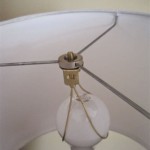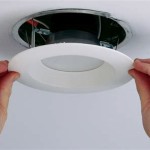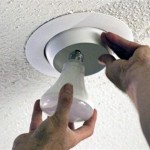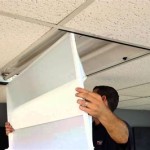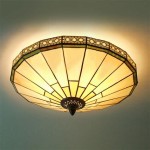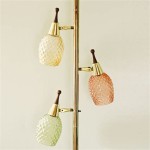Recessed Lighting For Drop Ceiling: Essential Aspects To Consider
Recessed lighting has become increasingly popular in both residential and commercial spaces, offering a sleek and modern look while providing optimal illumination. When it comes to drop ceilings, recessed lighting becomes an ideal choice due to its ability to be concealed within the ceiling grid, creating a seamless and cohesive appearance.
However, there are several essential aspects to consider when choosing recessed lighting for drop ceilings. Understanding these factors will ensure you make an informed decision that meets your specific lighting needs and aesthetic preferences.
Trim Options:
Recessed lighting trims are the visible part of the fixture that frames the light source. They come in various shapes, sizes, and finishes, allowing you to customize the look of your lighting. Popular trim options include:
- Baffle trims: Feature a honeycomb-like design that reduces glare and provides a more diffused light distribution.
- Reflector trims: Direct light downward, creating a focused beam of illumination, ideal for task lighting.
- Eyeball trims: Allow for adjustable light direction, providing flexibility in illuminating specific areas.
Bulb Type:
Recessed lighting fixtures can accommodate different bulb types, each with its own unique characteristics:
- Incandescent bulbs: Traditional bulbs that emit a warm, yellowish light but have a shorter lifespan.
- Halogen bulbs: Brighter and more energy-efficient than incandescent bulbs, but still produce heat.
- Compact fluorescent lamps (CFLs): Energy-efficient bulbs that produce a cooler light compared to incandescent bulbs.
- Light-emitting diodes (LEDs): The most energy-efficient and long-lasting option, providing a wide range of color temperatures and brightness levels.
Housing Type:
The housing of a recessed light fixture determines how it's installed and supported within the drop ceiling grid:
- IC-rated (Insulation Contact) housings: Designed to be in direct contact with insulation, allowing for placement above ceilings with limited clearance.
- Non-IC-rated housings: Require a space between the fixture and insulation, suitable for when there's ample clearance above the ceiling.
Wattage and Lumen Output:
The wattage of a recessed light bulb determines its energy consumption, while the lumen output indicates the amount of light it produces. Consider the size and brightness requirements of the space when selecting the appropriate wattage and lumen output for your recessed lighting.
Spacing and Layout:
Proper spacing and layout of recessed lighting fixtures are crucial to achieve balanced illumination. Determine the optimal spacing and placement based on the size of the room, ceiling height, and desired light distribution.
Conclusion:
Choosing the right recessed lighting for your drop ceiling requires careful consideration of various aspects. By understanding the available trim options, bulb types, housing types, wattage and lumen output, and spacing and layout, you can create a lighting scheme that complements your space and meets your functional and aesthetic needs.

How To Install Recessed Lights In A Drop Ceiling Temecula Handyman

How To Install Recessed Lights In A Drop Ceiling The Home Depot

Pauluhn Ft Marine Interior Drop Ceiling Recessed Light Eaton

Drop Ceiling Lights Commercial Led

How To Install Recessed Lights In A Drop Ceiling Temecula Handyman

5 Drop Ceiling Lighting Ideas

Diy Recessed Lighting Installation In A Drop Ceiling Tiles Part 3 Super Nova Adventures

What Are The Diffe Types Of False Ceiling Lights Urban Life

Drop Ceiling Installation How To Install A Homeserve Usa

Suspended Ceiling Lights The Best To Put On A
Related Posts



